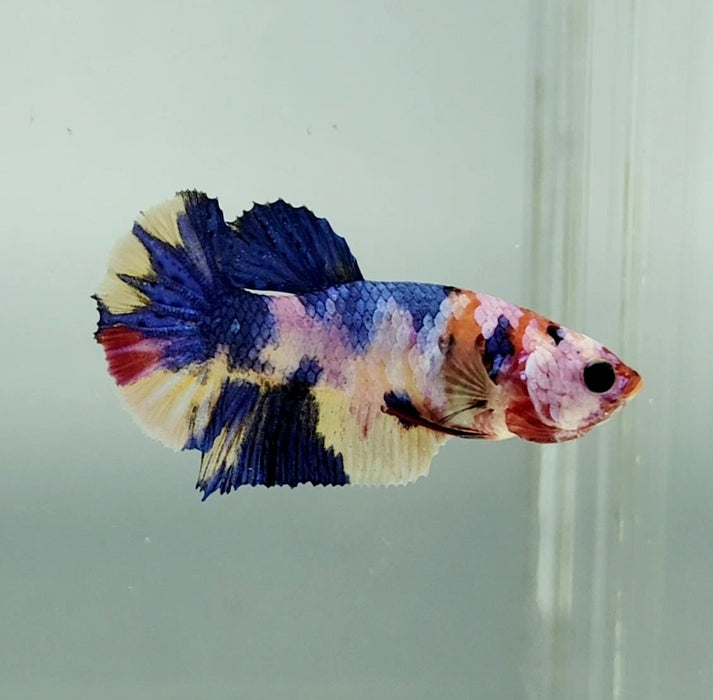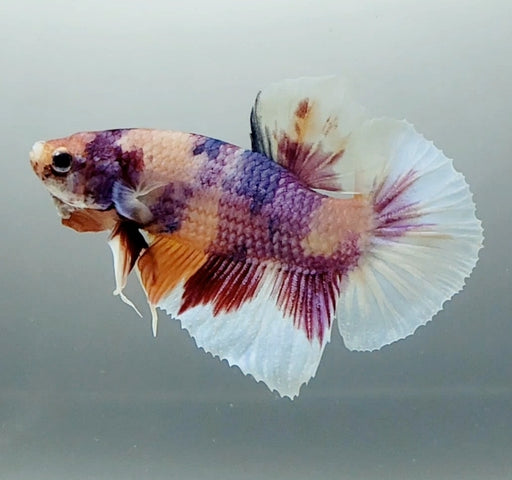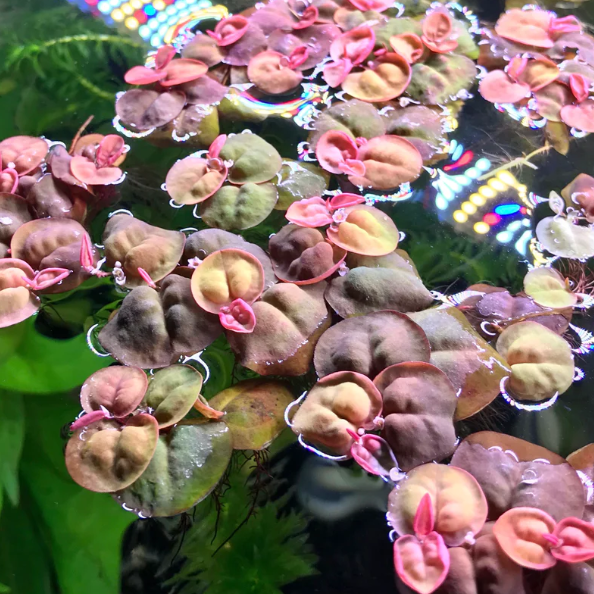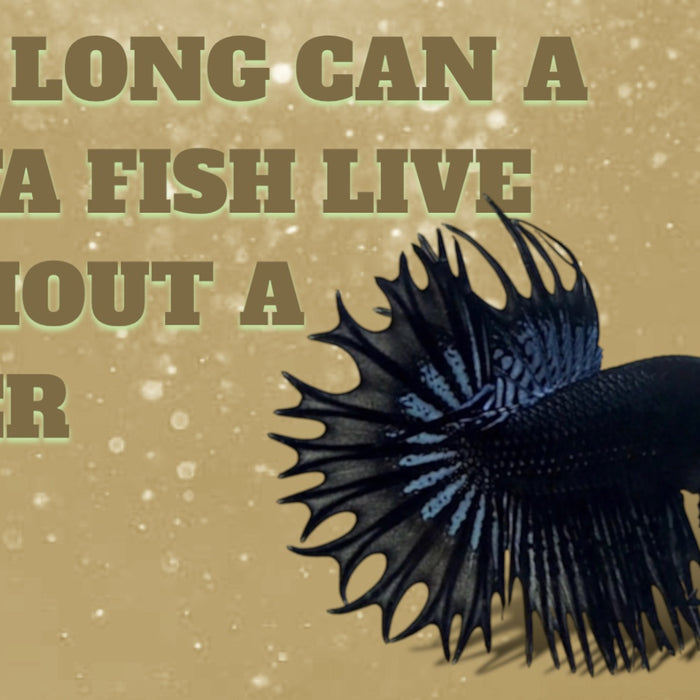
Search
Use this section to help customers find the products they're looking for.

Get a great deal on a female betta fish sorority at JVBetta! When purchasing our bulk female fish you get a big discount, saving atleast $5 per gor...
View full details

Giant Galaxy Koi Betta FishType: Giant Betta Gender: Male Origin: Indonesia For additional options, be sure to browse our Giant Betta Fish for Sal...
View full details

Live plants are a great way to keep your betta fish’s water healthier. Aquatic plants add oxygen to the water and help filter out bad stuff. They also provide hiding and resting areas for your fish. After all, many of...

You have a betta fish, and you know that bettas can be aggressive toward other bettas and some other fish, so you want to try something different to liven up your aquarium. You’ve seen some super cool looking shrimp and...

Betta fish are wonderful pets. They have surprisingly big personalities for such a little fish. And they are absolutely gorgeous. Bettas are less demanding, carewise, and hardier than many other tropical fish. Of course, you see them in pet stores...
Use this section to help customers find the products they're looking for.
What Are Betta Fish?
Kingdom: Animalia
Phylum: Chordata
Class: Actinopterygii
Order: Perciformes
Suborder: Anabantoidei
Family: Osphronemidae
Genus: Betta
Species: Splendens
Betta fish are also known as Siamese fighting fish, labyrinth fish, Japanese fishing fish, fighting fish, fighter, Betta splendens, and B. splendens. These beautiful freshwater fish are generally colorful and ornate with captivating fins and tails and, of course, known for their fighting ways. Betta splendens, in fact, translates to “splendid warrior.” The keeping of wild betta fish originated in Asia for the purpose of using the fish for fighting as a form of entertainment. Betta fish’s native range extends from Thailand into Cambodia, Laos, and Viet Nam. Bettas have been kept as pets in the United States going back about 100 years. However, a recent study used genome sequencing to determine that betta fish have been being domesticated for about 1000 years!
How to Care for a Betta Fish
Choose a glass or plastic aquarium that is 5 gallons for best results. Do not keep your betta fish in a tank that is smaller than 2 gallons. Keep in mind that the smaller the tank or the bowl is, the more often it needs to be cleaned. Bettas are tropical fish so the water temperature should be around 76 to 81 degrees Fahrenheit (25 to 28 Celcius) and the pH range should be between 6.5 to 7.5. Filters are not required for betta fish to survive, but they keep the water healthier and the tank cleaner, which means less water changes that you need to perform. Betta are sensitive to chlorine so be sure to use a water conditioner when adding water to your betta’s tank. Distilled water should be avoided because essential minerals are removed. Offer your betta a hideout or two in the form of tank decor or plants. Choose live or silk plants to avoid harming delicate fins. Learn more about betta fish care. For a betta fish natural habitat you can incorporate catappa leaves (Indian Almond Leaves) or use Indian Almond Leaf Extract. The tannins in the leaves will darken the water naturally and simulate the natural betta habitat. It also offers privacy and has other health benefits like antifungal and antibacterial properties. Using the whole leaf adds a natural look to the decor, while using the extract offers quick results. Read Using Indian Almond Leaf Extract for Betta Fish.
For more information on taking care of a betta fish, read our latest blog post on betta fish care.
How Long Do Betta Fish Live?
In the wild Siamese fighting fish, also known as Japanese fighting fish live about 2 years. In captivity the average betta fish lifespan is about 3 years of age, but it is not unusual for them to live up to 5 years. Keep in mind that most pet store bettas are about 1 year old when you purchase them. The oldest recorded betta was 10 years old.
How to Breed Betta Fish
Content DiscripGet at least two tanks, one for housing and one for breeding. Cycle your tanks about a month before getting your fish. Choose your breeding pair. Your breeding tank should be in a calm and quiet area. Bettas prefer privacy when they breed. (I mean who doesn’t) The breeding tank will need to be kept around 78 degrees fahrenheit. The bottom of the tank should be bare and if you use a filter it should be a gentle one that won’t disturb the bubble nest. You still want to provide hiding places for your mating pair and something for the surface of the water that the male can use to build his nest. Read our blog for more about Breeding Betta Fish.
What do Betta Fish Eat?
Content DiscriBettas are carnivorous fish so they require a high protein diet. In the wild they eat brine shrimp, mosquito larvae, daphnia, bloodworms, and even tiny fish. The most common food source for pet bettas is pellets. Choose a high quality food without a lot of fillers like corn and wheat. Freeze dried bloodworms, brine, or daphnia shrimp are a great treat for your pet betta. Live and frozen foods are great, but have a higher risk of carrying disease or parasites.ption
How Often Do You Feed Betta Fish?
Never overfeed bettas or other tropical fish. 2 to 4 Pellets should be fed once or twice a day. If you supplement with freeze dried or other food, substitute about 1 pellet for 1 piece of food.
What Fish Can Live With Bettas?
Female bettas can live together in a tank, but male Siamese fighting fish should either live by themselves or be in a tank with other non-aggressive fish species. Good tank mates for betta fish are guppies, kuhli loaches, african dwarf frogs, ghost shrimp, neon tetras, ember tetras, cory catfish, harlequin rasboras, and zebra snails. Plecostomus are a good option too, but consider that many plecos get quite large so you will need a tank that will be appropriate for them. There are small varieties of plecostomus, like the bristlenose or clown pleco, so choose those or another small variety if you don’t want a large tank. The bonus with having plecos is that they clean the algae in your tank!
Do Betta Fish Sleep?
Ever wonder do betta fish sleep? Fish do not sleep, at least not like birds and mammals. Bettas do not have eyelids to shut in order to sleep, but they do rest with their eyes open. They take time to slow their metabolism and activity and even rest on the bottom of their tank or in a comfy spot amongst plants or tank ornaments. They don’t fully sleep so that they can stay alert to danger, a trait that comes from their wild ancestors.
How Big do Betta Fish Get?
Most types of betta fish grow to a mature size up to 3 inches (7.6cm), but average about 2.25 inches (5.7cm), Male and Female betta fish are about the same size, but the males tend to look larger than the females because of their bigger, longer fins.
Do Betta Fish Need A Filter?
The short answer is, no, betta fish can survive without a filter. There are no filters in the wild and wild bettas often live in less than ideal water conditions. They have a mechanism to survive these less than ideal conditions. Their labyrinth organ gives betta fish the ability to breathe air from the atmosphere. This is why you see your betta pop up to the top of their tank every once in a while.
How Long Can A Betta Fish Go Without Food?
In the wild, Japanese Fighting Fish go as long as 2 weeks without food. Our spoiled pet bettas probably shouldn’t go for more than a few days without food though. In fact, a full day without food at least once per week can be beneficial for betta fish’s digestive system.
Can Betta Fish Live With Other Fish?
In general, you are going to get the best results and have the easiest time when you keep betta fish by themselves, especially males. Female bettas are much more likely to tolerate other fish than males. Some potential non aggressive fish companions for betta fish include guppies, kuhli loaches, neon tetras, ember tetras, cory catfish, and harlequin rasboras.
Can Betta Fish Live Together?
Male betta fish should not be housed together. Females do tend to be less competitive with each other than males, but it can still be difficult to keep females together in a sorority. If you can get a sorority that is all from the same fry, you tend to have the best luck. JV Betta offers bonded betta sororities for sale.
Do Betta Fish Need A Heater?
Absolutely! Betta fish need a heater; they are tropical fish. Bettas will be healthiest and happiest with their water temperature between 76-81 degrees Fahrenheit. Any water heater that is appropriate for the size of your tank will maintain this temperature range.
What Do Betta Fish Eat?
Bettas are carnivorous fish so they require a high protein diet. In the wild they eat brine shrimp, mosquito larvae, daphnia, bloodworms, and even tiny fish. Betta typically eat a premium pelleted betta food as their main food source. Live and frozen foods are great, but have a higher risk of carrying disease or parasites. So choose reliable sources. Supplementing with our safe, parasite and disease free live daphnia will keep your betta healthy and happy!
Can Betta Fish See In The Dark?
Betta fish do not see well in the dark. They seem to get around just fine though. Bettas actually keep a similar schedule to us in the wild, awake during the daytime and resting at night.
Can Goldfish Live With Betta Fish?
We do not recommend that goldfish and bettas be housed together. Bettas are likely to be aggressive and territorial with goldfish. Beyond this consideration, the water temperature requirements of these pet fish are not compatible.
Do Betta Fish Get Lonely?
We aren’t betta fish so we don’t know for sure, but we have watched and taken care of hundreds of betta fish. They do not seem to get lonely or crave the companionship of other fish. In fact, just the opposite, betta fish tend to be anxious around other fish because of their competitive and territorial nature.
Do Betta Fish Like Light?
Betta fish enjoy an environment that simulates their natural environment which has sunlight during the day and darkness at night. So, yes, we think betta fish enjoy typical tank lights. Avoid lights that are overly bright or pulse.